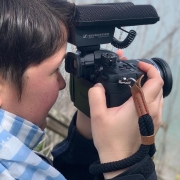Norris Lab Finds HEDS Gene: Kallikrein
Chronic Pain Partners is excited to share a significant breakthrough from the Norris Lab regarding hypermobile Ehlers-Danlos Syndrome (hEDS). After a long wait, the research, spearheaded by Dr. Cortney Gensemer, identifying a genetic variant associated with hEDS has been published, pinpointing mutations in the Kallikrein gene family.
The Kallikrein gene family, known for encoding enzymes that play crucial roles in various physiological processes, has now been linked to hEDS. These mutations are believed to disrupt normal connective tissue function, contributing to the symptoms of hEDS, such as joint hypermobility, chronic pain, and skin elasticity issues.
About Ehlers-Danlos Syndromes
The Ehlers-Danlos Syndromes are a group of hereditary connective tissue disorders characterized by symptoms like joint hypermobility, skin hyperextensibility, and tissue fragility. There are 13 recognized types of EDS, each with a distinct genetic cause except hEDS. Diagnosis typically involves a combination of clinical evaluation, family history, and genetic testing. However, diagnosis of hEDS so far was only possible via clinical examination based on a strict set of rules outlined by the 2017 New York classification.
Genes associated with hEDS
Historically, identifying the specific genetic mutations associated with hypermobile Ehlers-Danlos Syndrome (hEDS) has been challenging. Unlike the other subtypes of EDS, which have well-defined genetic markers, hEDS has been a mystery in terms of the genetic cause. Researchers, up to this day, feel strongly that there may be more than one gene associated with hEDS.
In the past, several genes were suspected to play a role in hEDS, including those related to collagen synthesis and processing due to the connective tissue abnormalities observed in patients. Some of these genes included Tenascin-X-B, a gene encoding the Tenascin-X protein, an extracellular matrix protein involved in connective tissue structure, which was another candidate. Heterozygous Mutations in TNXB have previously been linked to hEDS (not in the recent classification), while homozygous mutations are linked to classical-like EDS. Additionally, a recent publication by scientists at Tulane University proposed a possible new mechanism behind hypermobility: folate dependency. The researchers hypothesize that MTHFR mutations may lead to or contribute to a form of hypermobile EDS, and researchers from Poland released a preprint of research that found the MIA3 gene to cause some of the hEDS cases. There have been some more papers over the years hypothesizing one or another gene for a small number of hEDS cases.
Norris Lab Study Design
The study by the Norris Lab, which was released as a preprint with no peer-review process, involved extensive genetic analysis of individuals diagnosed with hEDS. Researchers started with one family with hEDS and identified a specific mutation in the Kallikrein gene family. Additionally, they searched for pathological mutations in hEDS patients via whole exome sequencing and found 65 patients out of the 197 with variants in the Kallikrein gene family. Knock-in mice, meaning genetically engineered mice in which that specific DNA sequence is inserted into the genome – in this case, the Kallikrein gene mutation – showed clinical signs of hEDS as well, proving those mutations causative for EDS.
This discovery is a monumental step forward for the hEDS community, offering a specific genetic marker for a subtype of Ehlers-Danlos Syndrome that had previously eluded genetic identification. The findings promise to enhance diagnostic accuracy and open new avenues for targeted therapies, providing much-needed validation for patients who have long struggled with misdiagnosis and misunderstood symptoms.
For more detailed information, you can access the complete study here.







 Frank Marx
Frank Marx




Leave a Reply
Want to join the discussion?Feel free to contribute!